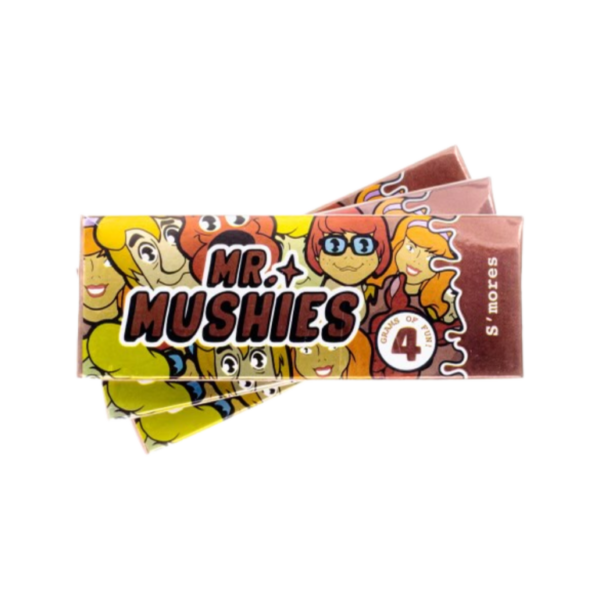How to Write an SEO-Optimized Blog Post for Mr. Mushies
Creating a blog post that is not only engaging but also optimized for search engines is crucial for driving organic traffic to your website. For Mr. Mushies, a brand likely focused on mushroom-related products or information, this guide will help you craft a compelling blog post of over 700 words that adheres to SEO best practices.
1. Understanding Your Audience
Before you start writing, it’s essential to understand who your target audience is. Are they health enthusiasts looking for nutritional benefits of mushrooms? Are they culinary aficionados interested in recipes? Knowing your audience will help tailor your content to their interests and needs.
2. Keyword Research
Keyword research is the foundation of SEO writing. Start by identifying relevant keywords related to mushrooms and your specific niche within that market. Use tools like Google Keyword Planner, Ahrefs, or SEMrush to find keywords with good search volume and low competition.
For example, if Mr. Mushies specializes in gourmet mushroom recipes, potential keywords could include “gourmet mushroom recipes,” “health benefits of mushrooms,” or “how to cook with mushrooms.”
Once you have a list of keywords, select one primary keyword and a few secondary keywords to incorporate throughout your post.
3. Crafting an Engaging Title
The title tag is one of the most critical elements for SEO. It should be catchy yet informative, incorporating your primary keyword naturally. For instance:
- “Delicious Gourmet Mushroom Recipes: Elevate Your Cooking with Mr. Mushies”
This title not only includes the primary keyword but also entices readers by promising delicious recipes.
4. Creating an Outline
An outline helps organize your thoughts and ensures that your blog post flows logically. A suggested structure for the Mr. Mushies blog could be:
- Introduction
- Health Benefits of Mushrooms
- Gourmet Mushroom Recipes
- Recipe 1: Sautéed Garlic Mushrooms
- Recipe 2: Creamy Mushroom Risotto
- Recipe 3: Stuffed Portobello Caps
- Tips for Cooking with Mushrooms
- Conclusion
5. Writing the Introduction
The introduction should grab attention and provide context for what readers can expect from the post. Start with a hook—perhaps a surprising fact about mushrooms or a question that resonates with your audience’s interests.
Example: “Mushrooms are not just an ingredient; they are a powerhouse of nutrition! Did you know that certain varieties can boost your immune system while adding rich flavors to your dishes? In this post, we’ll explore some gourmet mushroom recipes that will elevate any meal.”
6. Developing Content Sections
Each section should be informative and engaging while incorporating relevant keywords naturally.
Health Benefits of Mushrooms
Mushrooms are packed with nutrients such as vitamins D and B, selenium, potassium, and antioxidants which contribute to overall health. Discuss how different types of mushrooms offer unique health benefits—like shiitake mushrooms supporting heart health or reishi mushrooms enhancing immunity.
Gourmet Mushroom Recipes
Recipe 1: Sautéed Garlic Mushrooms
Ingredients:
- Fresh mushrooms (your choice)
- Olive oil
- Garlic
- Salt & pepper
Instructions:
- Clean the mushrooms and slice them.
- Heat olive oil in a pan over medium heat.
- Add minced garlic until fragrant.
- Toss in the sliced mushrooms and sauté until golden brown.
- Season with salt and pepper before serving.
Recipe 2: Creamy Mushroom Risotto
Ingredients:
- Arborio rice
- Broth (vegetable or chicken)
- Fresh mushrooms
- Parmesan cheese
Instructions:
- Sauté onions in olive oil until translucent.
- Add Arborio rice and stir until coated.
- Gradually add broth while stirring continuously until creamy.
- Mix in sautéed mushrooms and Parmesan cheese before serving.
Recipe 3: Stuffed Portobello Caps
Ingredients:
- Large portobello caps
- Spinach
- Feta cheese
Instructions:
- Preheat oven to 375°F (190°C).
- Remove stems from portobello caps.
- Mix spinach with feta cheese; fill each cap generously.
- Bake for about 20 minutes until heated through.
Tips for Cooking with Mushrooms
Share practical tips such as how to clean mushrooms properly (avoid soaking them), pairing suggestions (which herbs complement which types), or storage advice (keeping them fresh longer).
7. Conclusion
Wrap up by summarizing key points discussed in the blog post and encouraging readers to try out the recipes themselves or explore more about mushroom varieties available at Mr.Mushies.com.
Example conclusion: “Mushrooms are versatile ingredients that can transform any dish into something extraordinary! We hope these gourmet recipes inspire you to experiment in the kitchen using our premium mushroom products at Mr.Mushies.com.”
8. Optimize for SEO Before Publishing
Ensure that you optimize images by using alt tags containing relevant keywords, use internal links to other posts on your site where applicable, and include external links to authoritative sources when necessary.
Finally, promote your blog post through social media channels and email newsletters to maximize reach.
By following these steps meticulously, you can create an engaging blog post tailored specifically for Mr.Mushies that not only informs but also ranks well on search engines due to its optimized structure and content strategy.
Top 3 Authoritative Sources Used:
Yoast: A leading provider of SEO plugins for WordPress known for its comprehensive guides on optimizing content effectively for search engines.
Buffer: A social media management platform recognized for its data-driven insights into content performance across various platforms including blogs.
HubSpot: A marketing software company renowned for its extensive research on inbound marketing strategies including effective blogging techniques aimed at increasing traffic and engagement online.







Reviews
There are no reviews yet.